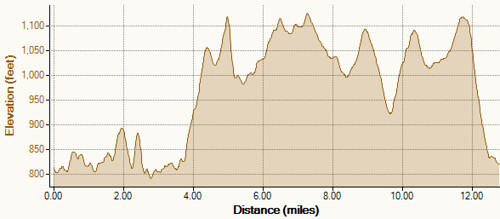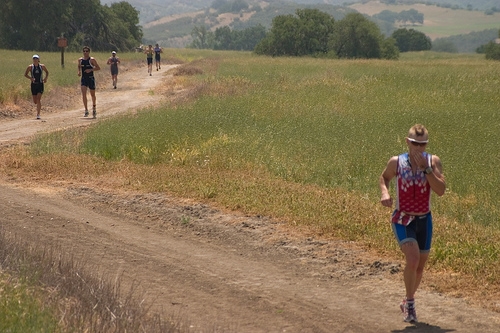
35,000-FEET SOMEWHERE OVER NORTHERN MEXICO—Big thanks to TriGreyhound for allowing the Iron Kahuna to post this race report on Ironman Cozumel on his site. Those triathletes of a certain age will remember the Kahuna from TriGeekDreams, one of the first triathlon blogs on the Internet that suddenly went dark a few years ago, retiring like NFL Jim Brown did at the top of his game.
Well, the Iron Kahuna is back and badder than ever, at least for this single post.
About a year ago, Greyhound sent the Kahuna a message. “Hey, they’re starting an Ironman in Cozumel. How about we sign up?”
The Kahuna had one Ironman under his race belt—in Florida three years ago when the Gulf Coast did a nice imitation of a freezing fall day in New England. Still, surrounded by his tri-blogger friends—and with the proper training under his belt—it turned out to be one of the best weekends of his life. You can still see the Kahuna and Trimama getting their tattoos on YouTube (and yes, the Kahuna did cried like a little bitch, Trimama didn’t feel a think and Robo-Stu laughed his ass off).
Three years can make a memory hazy. The physical and mental pain of an Ironman recedes and eventually is stored into the that-was-no-big-deal? compartment in the brain. The tattoo looks a little less sharp, along with the clothing purchased in a frenzy after the Florida race. The Iron Kahuna was beginning to feel like the Rusty Kahuna. Though he had continued to race various distances over the intervening years, he wanted another crack at an Ironman.
So, Cozumel? The Mayan Riviera? With Tri-Greyhound? The Kahuna was in and signed up that day.
Well, training ebbed and flowed over the next 12 months. Juggling multiple jobs, four boys, a book tour (“Losing My Religion: How I Lost My Faith Reporting on Religion in America—and Found Unexpected Peace”) and two finicky calves, some weeks the triathlon training gods were pleased, other times they were extremely pissed.
There was something else heading into his second Ironman. The Kahuna didn’t have that epic, I’m-going-to-conquer-Mt.-Everest feeling in his gut. In fact, he had nothing. Little nerves, little anxiety, little excitement. He wondered if this meant his race was doomed.
Less than a month before the race, he competed in the Big Kahuna (no relation) Half-Ironman in Santa Cruz, Calif. and had to walk the last six miles of the run because his calf had popped. He decided during his long stroll toward the finish that he would drop out of Ironman Cozumel. That was the sensible thing to do.
Of course, after sleeping on it, he decided to eff his calves and at least get to the start line. The entry fee, airlines, hotel and food had already been paid. What the hell? He started running in the deep end of the pool—a practice that studies show keep runners in nearly as good of shape was running on dry land. He logged three hours on extremely boring Sunday morning. And he got Active Release Technique (ART) massages twice a week, sweating and tearing up at the pain caused by the doctor stripping away scar tissue.
So on Thanksgiving Day, he found himself full of doubts and pending doom but on a plane from Los Angeles bound to Cancun, Mexico. (By the way, if you’re thinking about doing Ironman Cozumel, there’s no easy way to get there. Most triathletes hopped a flight to Cancun, took a 50-minute taxi ride to a Playa del Something, board a ferry for a 45-minute vomit-inducing voyage to Cozumel, and then (in the Kahuna’s case) a 25-minute taxi ride to his hotel. Thank God Greyhound had wisely signed up for package deal from Endurance Sports Travel, which shepherded us along the way—he will never do another Ironman without its services).
On Cozumel, everyone soon discovered that the island produced few easy race days. If it was windy, bad for the bike. If it wasn’t, the heat could wreck you. Turned out, the triathletes got a little of both.
The swim had to be the best course in Ironman history. You start by walking along a dock that enclosed a pod of dolphins (that tourists swim with) and then jump off on the platform into the warm and crystal waters of the Gulf of Mexico. The Kahuna, a swimmer more than anything else, took his place in the second row of triathletes. He didn’t feel nervous, only under-prepared and wondering if his calves would hold up on land enough for him to see the finish line.
He didn’t hear the gun, but everyone took off and so did he. The ocean bottom, probably 30-feet below, served as a guidepost. He would look up at the buoy, and then find a spot on the bottom far ahead that was in line with it and just swim to it. He easily stayed on course.
The majority of the swim had a favorable current, enough that the Kahuna pulled off a PR of 54:48. Hmmm. Maybe this was his day! Running to T1, he felt a twinge in his left calf. Holy crap. Right then, he decided to go all out on the bike because he would, at best, forced to walk the marathon.
So he took off on the bike and for the first 20 miles or so, he flew, his speedometer registering a steady 19, 20, 21 and sometimes 22 miles per hours. Like a freaking idiot, he began calculating the math and thinking it could get under 6 hours on the bike. This Ironman was going to be easy.
But then, he turned a corner and his bike, buffeted by 30 mph winds, almost came to a stop. The landscape gave a clue as to what to expect: the windward side of the island didn’t support much vegetation because nothing much could grow against the strong, steady winds. He struggled to maintain a double-digit speed. The mental torture?
He’d have to pass by this section of the course two more times before he could get off the bike.
Near the end of the first lap, he rode back into town and was greeted, for the first time, by the locals. The Mexicans were the best fans EVER. It felt like being on the pitch at a major futbol game: ear-piercing noise makers and residents lined along the street shouting, “Vayamos (Let’s go!), “Si, se puedo (Yes, you can!), and “Animal (Animal).”
It wasn’t until the third bike lap (after not finding his special needs bag) that the Kahuna felt like was he was dying, thanks mostly to the wind and heat (93 degrees was the high he registered on his bike computer). He had taken in his nutrition well, but his body didn’t want anything more.
At T2, the Kahuna sat for a while trying to cool his body and thinking, “Now a marathon? Really? Why did I ever sign up for this?” It was a familiar Ironman panic that seems new each time. He found some solace in that everyone inside in the men’s tent seemed to be bewildered by the difficulty of the bike leg.
Finally, the Kahuna forced himself to get out of his plastic chair and onto the race course. The crowds, as stated earlier, couldn’t have been better. And the truth be told, the Kahuna’s legs didn’t feel too bad, despite being hammered on the bike. His body overheating was the problem.
Want to know the most depressing part of an Ironman for the Kahuna? Passing by the Mile 1 banner on the run. Only 25.2 miles left! That will play tricks on your mind.
The Kahuna slogged on, running (slowly) between each aid station (they were only 1k apart). At the stations, he forced liquid down him and ate only bananas (the one food that seemed even remotely appealing).
The field of triathletes seemed like a pretty even mix between North American and Central and South American triathletes, which left a language barrier and resulted in little talking on the run leg (different than other triathlons the Kahuna had competed in). But that was OK because the Kahuna didn’t seem much like talking. He just was trying not to totally blow up (secretly he was hoping his calf would pop and he could either a) walk the rest of the way or b) quit; however, his ART doc had too good of a job).
As the sun set, the island delivered another soul-crushing obstacle: clouds of mosquitos. These bastards bit the hell of the Kahuna, who wasn’t in the mood. Finally, a volunteer broke out some repellante and the Kahuna splashed it all over his body. Problem solved.
After lap 2 of the run, the Kahuna did some quick mental calculations. If he hustled, he could finish under 14 hours. Here’s the internal debate he had with himself for the next couple of miles.
“Push! You can break 14 hours!”
“What, are you crazy? That’s just an artificial barrier. You are dangerously close to a heat stroke. Be mature about this.”
“But 14 hours! And you only have a 10k to go. Think of all the training you put in. This is nothing.”
“Just walk it in. Be safe. You will still be an Ironman today.”
Of course, the bad guy won. The Kahuna hustled along, making sure he kept ahead of the 14 hour barrier. But as he closed in on the 26-mile mark, the Kahuna realized he didn’t factor in the .2 part of the 26.2-mile run. So he sped up even faster (by know, faster was a relative term).
Finally, the Kahuna turned the final corner and saw, maybe 50 yards ahead of him, the finish line and the large digital clock above it that read: 13:59:50. He was in too much of a hurry and in too much pain to hear the cheers of the crowd (or even hear what the announcer was saying).
He crossed the line (head up, arms extended overhead for the good finishing photo) and triggered the timing mat: 13:59:59.
The Kahuna swam, biked and ran his best race he could that day. The course was much tougher than expected. Throughout much of the day, he swore that this would be his last Ironman. He wouldn’t go through all this pain again.
But now, a few days later, he’s announcing his un-retirement. He’s got more Ironmans in him. The feeling of accomplishment after finishing one is just too good to not experience again. Maybe Ironman Brazil 2011.
Greyhound, you in?




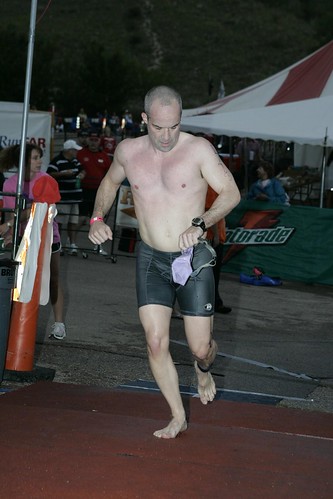
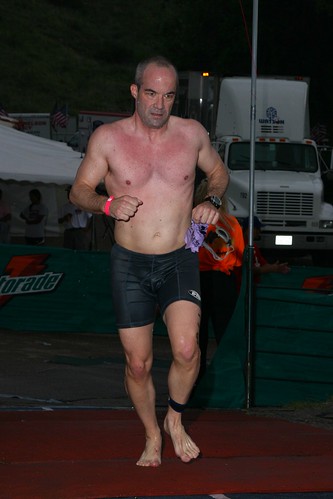
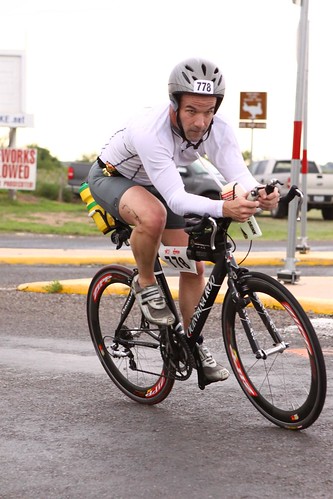
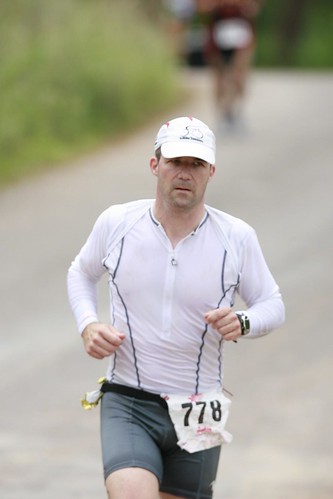
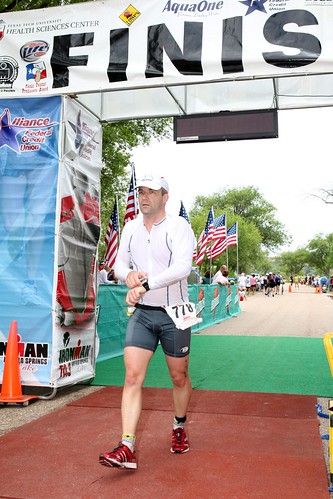
.jpg)
.jpg)




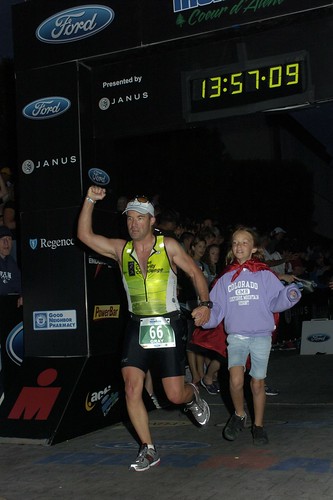
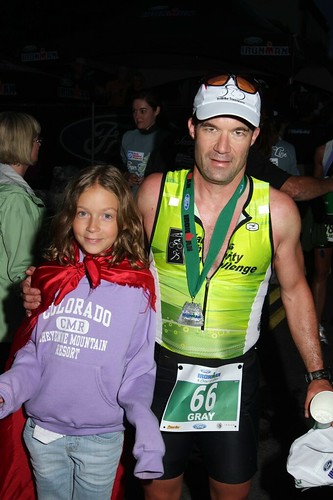
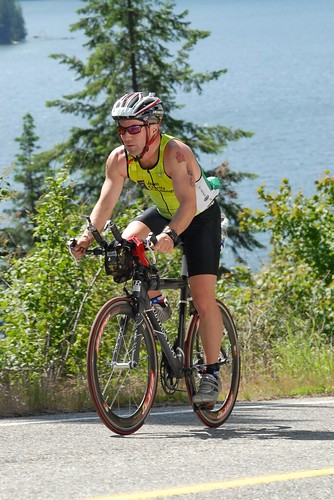
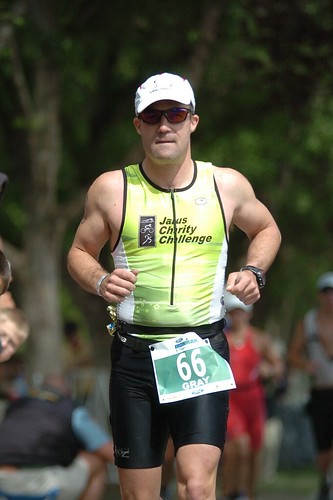
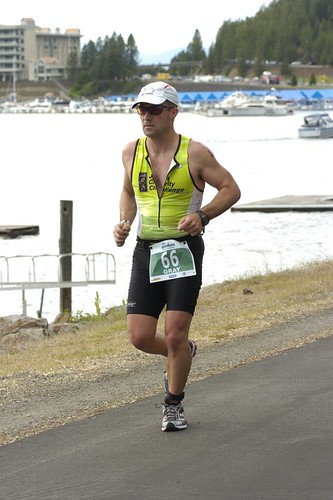
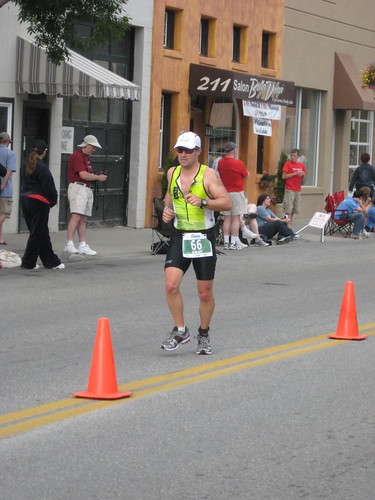

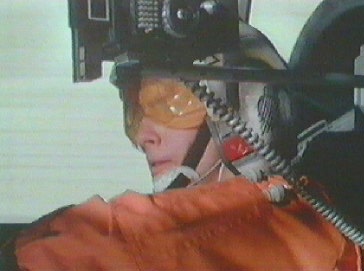
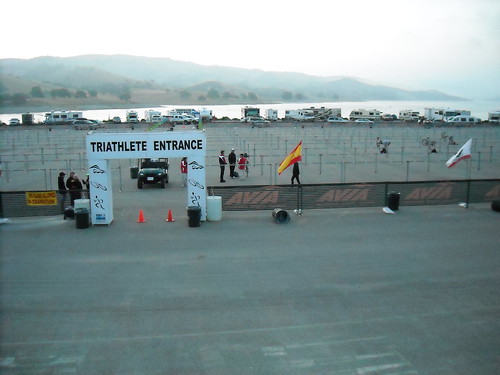
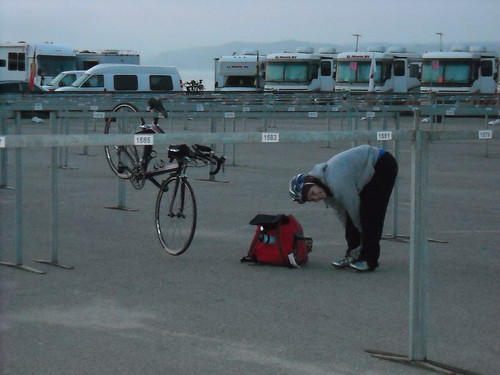
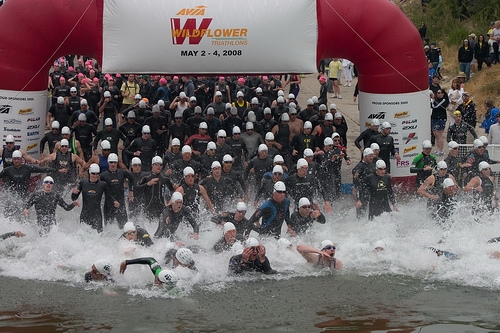
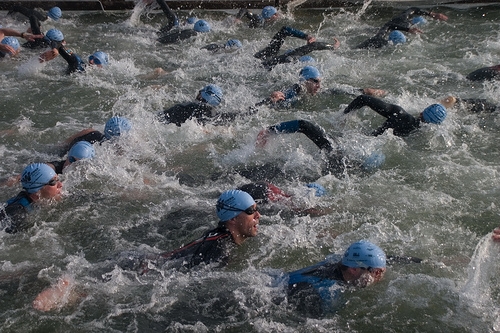
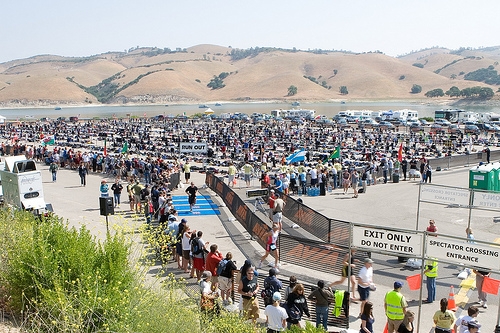


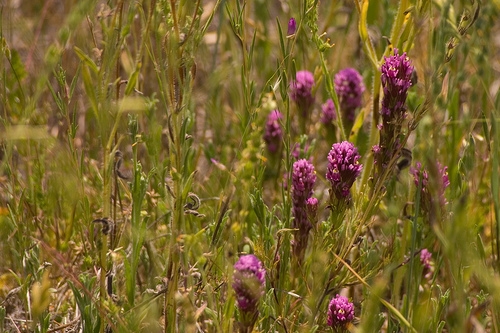
![image[7]](http://farm4.static.flickr.com/3154/2469816800_e54bd4a7d6.jpg)
